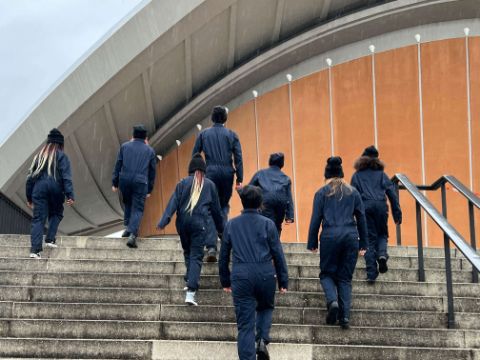
Jugendgremium Schattenmuseum, Caelius Juvenilis, 2022. Photo: Anja Scheffer
Schattenmuseum
The Schattenmuseum (shadow museum) understands itself as an alternative approach to conceptualizing a museum, and as a network it develops proposals to assist institutions in engaging with communities, collections, and educational possibilities. Content, methods, and artistic formats are generated and implemented collaboratively with young people and adults. The Schattenmuseum is oriented towards the concrete structures, needs, and goals of the respective institution. In the process, it opens up a testing ground that enables questions to be asked, providing space for dialogue or an experimental set-up that involves various visitor groups and integrates their perspectives.
The Schattenmuseum is steadily growing as an experimental set-up. Since 2021 it has observed the language(s) of the city from the perspective of aliens and explored its possibilities. A research object is HKW itself. Together with the artists’ collective sideviews e. V. and students from the Nürtingen primary school, the Schattenmusuem embarks on an artistic research expedition, exposing social barriers, hierarchies, and meanings and develops artistic-performative and interactive formats based on this research.
These formats oriented around the development of HKW’s programme, which extends beyond the building itself as an exhibition site in Berlin’s urban space. As a collaboratively developed, continually growing project structure, it can incorporate different programmes, creating corresponding artistic settings that are interactive, cross–generational spaces, within which and from which all participants can learn from each other.
The Schattenmuseum is composed of thirteen young people ranging in age from eleven to twenty-one who speak a total of six languages between them. It has been in existence since 2008 and, in addition to HKW, has also cooperated with other institutions including: Jewish Museum Berlin; Berlinische Galerie; the First Children’s Biennale (Staatliche Kunstsammlungen Dresden); KW Institute for Contemporary Art; and the Berlin Biennale.